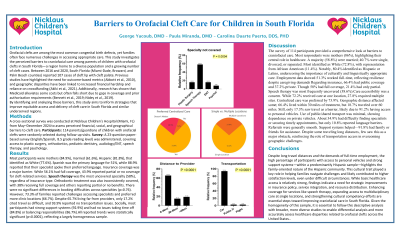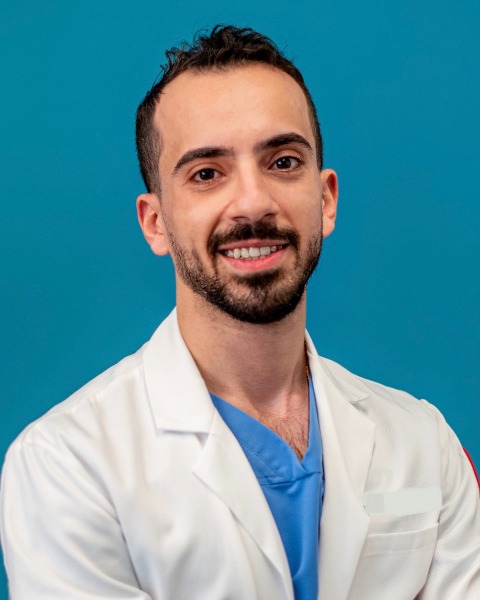Syndromes/Craniofacial Anomalies
5 - Barriers to Orofacial Cleft Care for Children in South Florida


George Yacoub, DMD
Pediatric Dental Resident
Nicklaus Children’s Hospital, Miami, FL
Nicklaus Children's Hospital
Miami, Florida, United States- PM
Paula Miranda, DMD
Pediatric Dental Attending/ Research Mentor
Nicklaus Children's Hospital
Doral, Florida, United States - OA
Oscar Arevalo, DDS, ScD, MBA, MS
Program Director
Nicklaus Children's Hospital
Doral, Florida, United States
Presenting Author(s)
Research Mentor(s)
Program Director(s)
Purpose: This study investigates perceived barriers to care among parents of children with orofacial clefts in South Florida to understand the healthcare obstacles these families face.
Methods: A 23-items survey was administered to 114 parents of children with orofacial clefts served by Nicklaus Children’s Hospital Craniofacial team. The survey, available in English and Spanish, explored financial, social, and geographical barriers. Data collection occurred between May and December 2024. Data was entered into Redcap (Research Electronic Data Capture) and analyzed using descriptive statistics, with results reported as means, standard deviations, and percentages.
Results: Of the 114 participants, 86% were mothers and 80.4% identified as Hispanic/Latino. Full-time employment was reported by 51.3% of caregivers and 66.4% relied on public insurance. Speech therapy was the most frequently uncovered service (38.6%), followed by Plastic Surgery and Audiology (11.4% each). While 72.2% received care at a single location, 27.8% visited multiple sites, reinforcing service fragmentation. Centralized care was a priority, with 73.9% preferring a single location. Travel barriers were minimal, as 91.2% had private transportation, but 17.3% reported travel as a challenge. While 34.9% faced difficulties finding specialists, only 10.8% encountered language barriers. Support systems were reported by 91.8% of participants.
Conclusions: Insurance gaps for key services highlight coverage disparities. Despite logistical challenges, many overcame barriers with private transportation and support networks. However, work-life balance and timely specialist access remain issues, emphasizing the need for integrated, accessible care models and expanded local services.
Identify Supporting Agency and Grant Number:

.jpg)